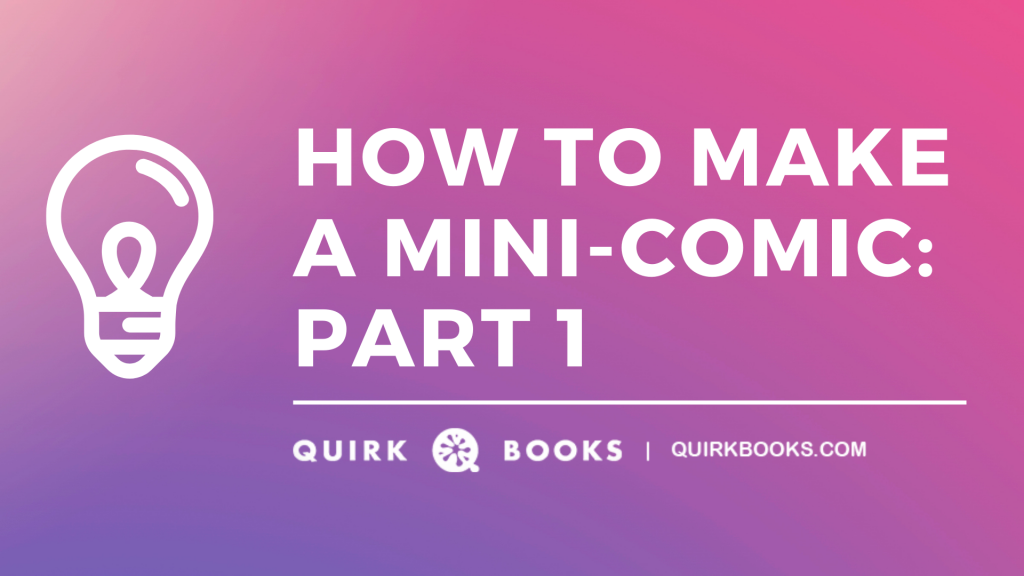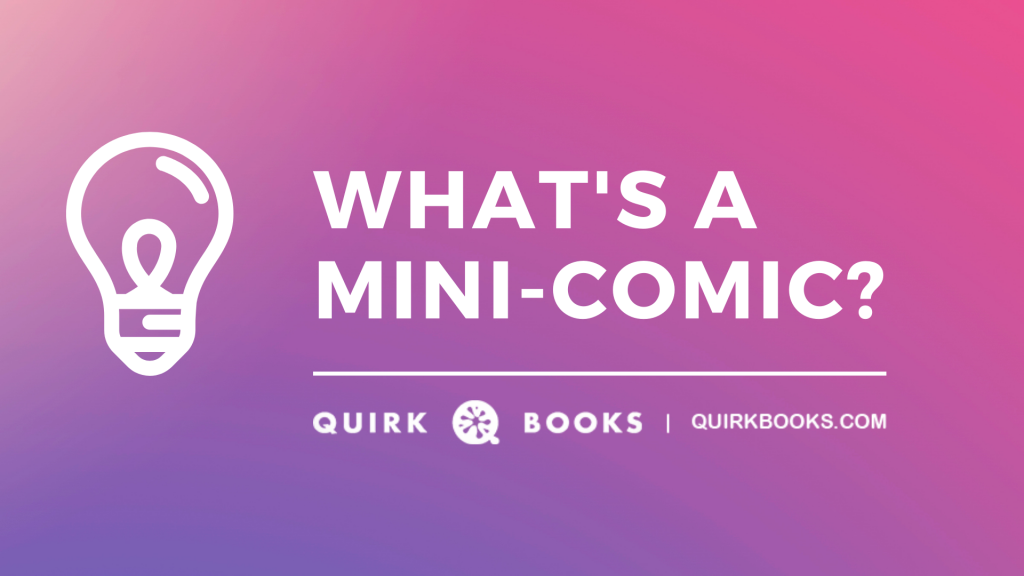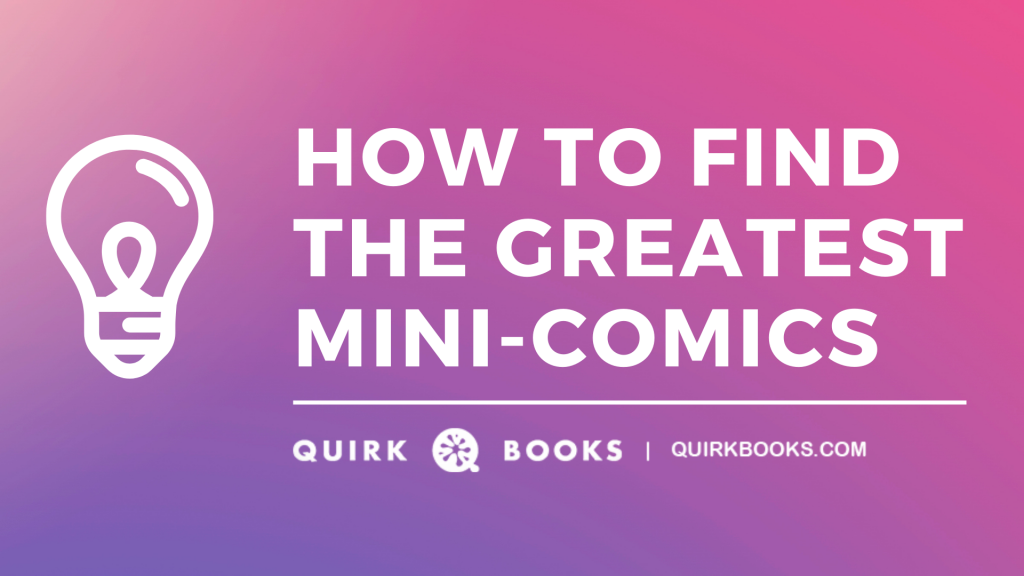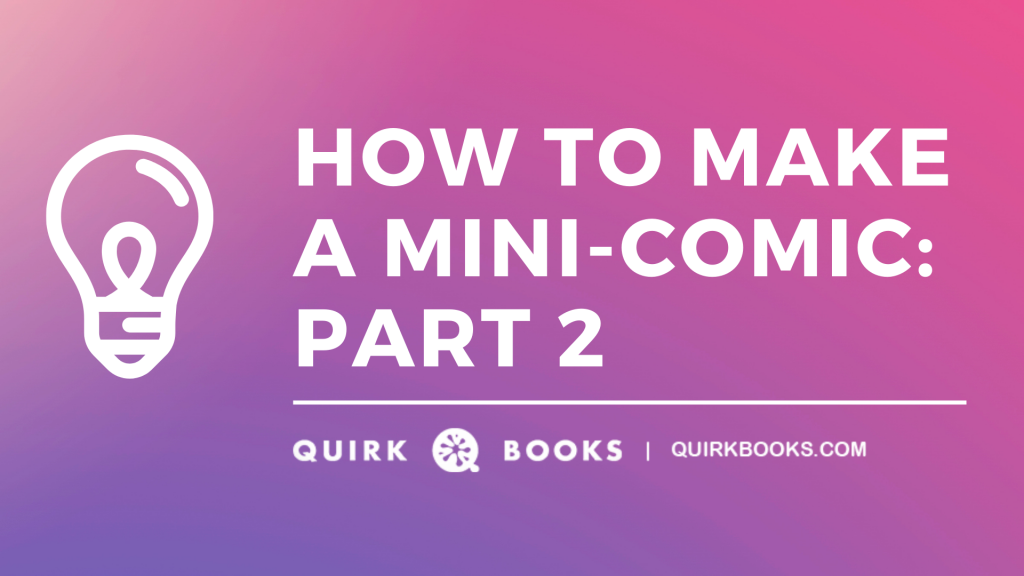How to Make A Mini-Comic: Part 1
We love yakkin' about mini-comics (we've already discussed why they're so awesome and where you can find them), but here's someone else's eloquent summary of why they're so great:
I've been reading comics since I was a wee'yin, drawing comics since high school and writing about comics since college. In all of this time, I have narrowed down the thing I love most of all in the entirety of the medium: comics written and drawn by amateurs, doing whatever they want and talking about the things which matter most to them.
Despite superheroes owning the vast majority of the market, comics are an inherently personal medium. The stories most creators tell, outside of the mainstream market, are intensely personal, even if they're not biographical.
And then there's the democratic nature of the distribution. An all-night copy center is all any creator needs to make their personal story, their vision, their perspective made available to the world at large.
Mini-comics are the apotheosis of the potential of comics, created by people whose formal skills tend to be uncluttered by formalism and unconstrained by convention. They are wildly valuable, and exceptionally lovable.
So says Quirk Books author Jon Morris, comics creator, and the operator of one of the oldest and smartest comics blogs on the Internet. As Jon notes, mini-comics are an excellent medium of creativity for anyone who's into comics, even if you’re not a professional or trained artist. Making a mini-comic to share with friends or family, or just for the fun of telling a story, is well within your grasp!
For inspiration: Illustrator Maritsa Patrinos's beautiful Curses and Blessings mini flips over to reveal blessings or curses, depending on your mood.
As we’ve seen, mini-comics can be as simple or complicated as the creator chooses. But for the most part the creation process is broadly similar. So here's a recipe for mini-comics that you can follow for your first mini-comic, or your five hundredth.
The Mini-Comics Order of Operations
Step 1: Decide on the format of your mini-comic. How will it be folded, how big will it be, what kind of paper will you use, how many pages will it have? You need to know this up front, because you want your story to fit the book.
Step 2: Make a dummy. It’s helpful to have a blank version of your mini-comic on hand so you can see how much space you have to work with, what the panels look like (are they vertical? horizontal? square? Something else?), and where the page turns are (it’s nice to pace the dramatic moments of your story so that turning the page reveals a surprise). You might make a quick sketchy version of your story right on the dummy, to see if your assumptions about the final product are correct.
Step 3: Create your story. Draw it, write it, color it, whatever and however you want to do it. Just make sure it will fit the format you decided on in step 1. If you’re drawing at a larger size and intend to shrink your art digitally—a tried-and-true comics strategy—make sure the proportion of your drawings are right for the pages of your mini-comic. That is, if your folded comic has panels 3 x 4 inches, the panels of your original art have to fit that proportion.
Step 4: Get your story onto the comic page. There’s lots of ways to do this. You might draw and write directly on your dummy, so you can photocopy that page to produce the mini-comic. Or scan your art and make a full-size document to print out and duplicate. Or maybe you do the whole thing digitally. Maybe you photocopy your drawings, cut out the panels, tape them in place, and use that as your master document for duplicating.
Step 5: Fold your mini-comic. This is the really hands-on part…but don’t worry, we’re about to show you some options. Some mini-comic formats require stapling, gluing, sewing, or other techniques for putting the pages together. But for now we’ll keep things simple.
Step 6: Make corrections. You’ve created your first mini-comic. Congratulations! But maybe it didn’t end up exactly the way you imagined. There’s a panel in the wrong place. One of the folds is in the middle of a drawing. The back cover is upside down. Don't worry, this is normal! Consider that first print to be test, and go back and make whatever adjustments are needed to put everything in its place.
Making a Single Sheet Mini-Momic: Variations
Lots of mini-comics are structured like little-sized version of standard comics, with multiple pages stapled together in the center, or like teeny books, bound at the spine. But an easy way to make your first mini-comic is to use single sheet of folded paper. Here are three options for that, all of which work will with a standard letter-sized 8 ½ x 11 sheet, the paper size that's beloved of offices copiers and home printers everywhere.
No-Fuss Version Mini-Comic:
Why not just draw a comics page, fold it up however you want it, and call it a mini-comic? Quick, easy, and frees up more time for drawing.
Some of the mysterious and compelling comics in this series by Justin Quinlan are single sheets of paper folded up and presented in a cool envelope. Simple but effective!
Accordion Fold Mini-Comic
This is another very easy option: Cut the sheet of paper into fourths (or thirds, or fifths, or whatever size you want). Then fold each strip accordion style. Each segment becomes one panel of your story. If two sided printing is an option for you, your comic can be twice as long. As a bonus, each sheet of paper yields four comics (or three, or five), multiplying your output.

Nine Lives, by Kristyna Baczynski, uses a simple accordion fold to present exquisite and beautiful illustrations.
Single Page Mini-Comic, Version 1: The Expanding Map Fold
Remember when people used to keep folded-up paper maps in their cars, instead of relying on GPS and their phones? Probably not, but this folding scheme sort of recalls those old-timey road maps. The format is fairly easy to use, yielding a four-page comic with a front and back cover. As the reader unfolds the comic, the pages get bigger and bigger, giving you a chance to really bump up the drama. There are some production challenges; when you place the art on the page, some of pages will be upside-down relative to the others, so maybe do a test first to make sure your artwork is oriented properly. And if you want to use the last (and biggest) page, you'll need to do two-sided printing.

Check out this mesmerizing video to see how to fold it:
Just dive in and make some mini-comics!" says Kelly Bastow, aka Moosekleenex, illustrator of The Fangirl's Guide To The Galaxy, and numerous comics. "Mini-comics can be about anything, they can be fact or fiction, any type of art style, busy or simple." Kelly and writer/artist Caitlin Major are the creators behind one Quirk's favorite webcomics, Manfried The Man. Explore other folding and layout options for making your own masterful mini-comics here and here!
Mini-comics displayed are from the personal collections of Quirk Books Comics Club members and are intended as a small and subjective sampling of the ever-expanding universe of mini-comics.









